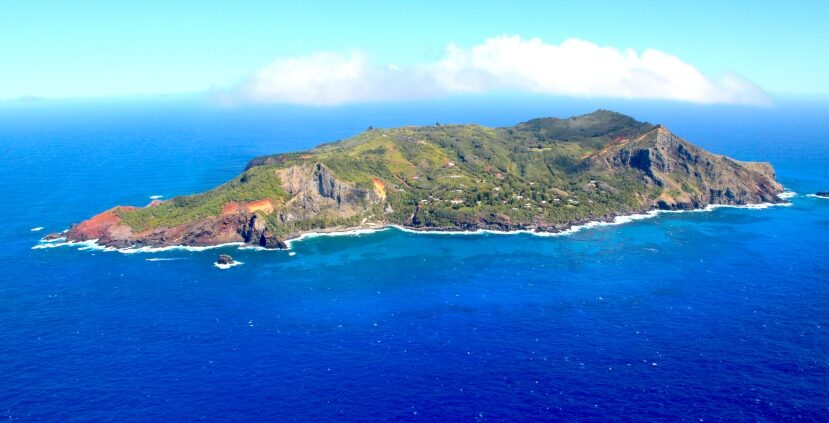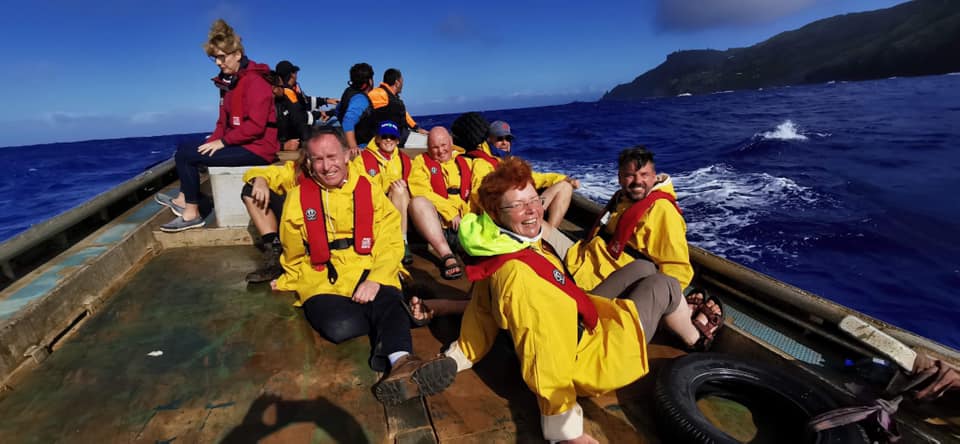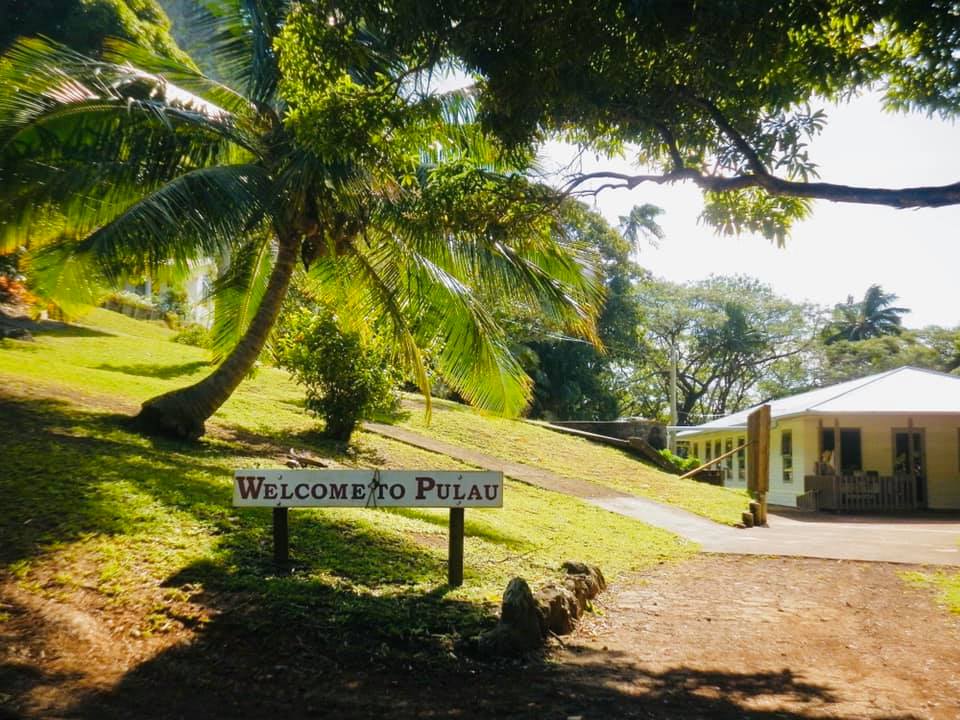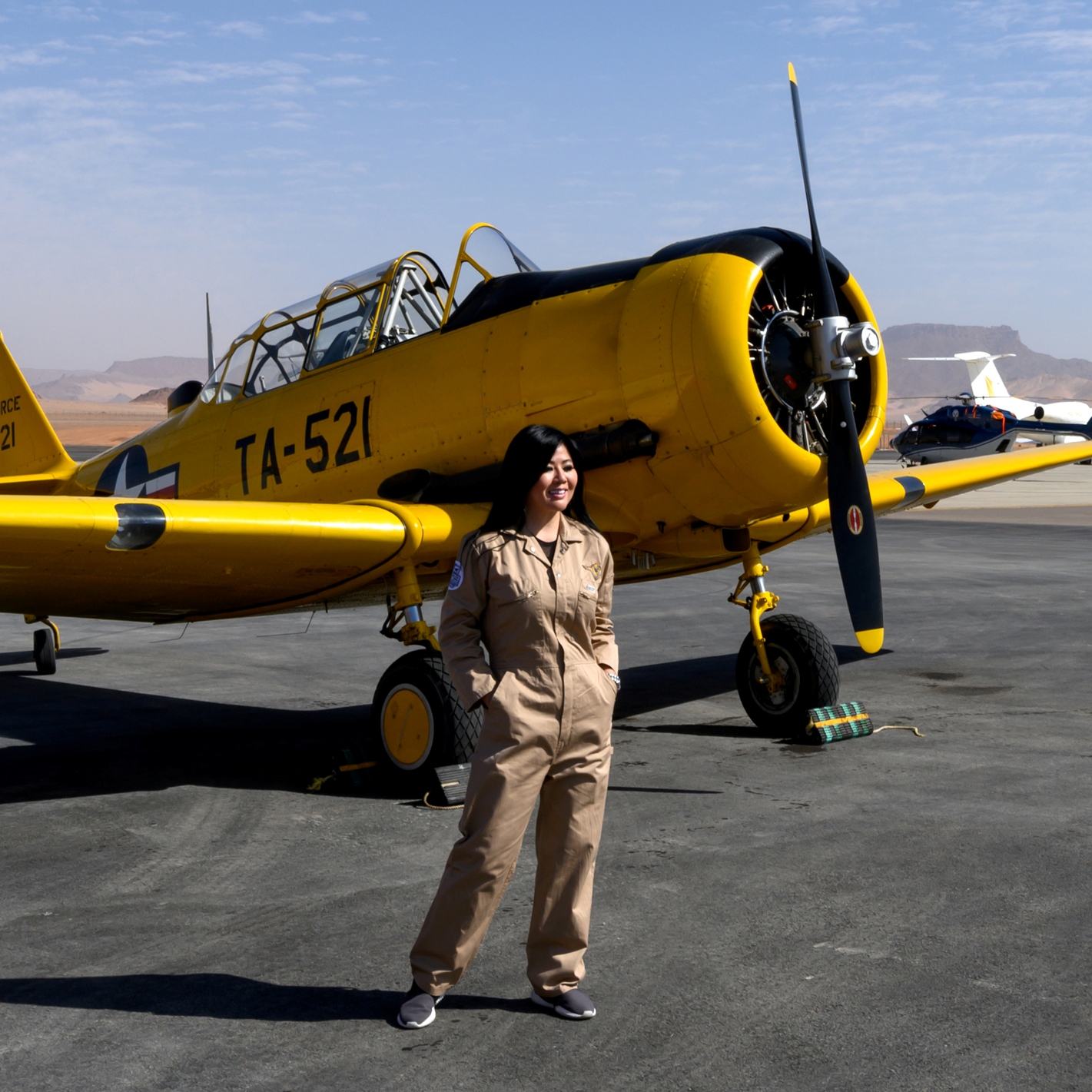
For the well-travelled, adventures to a remote South Pacific Island will always be worth searching for. The cool breeze blowing off from the sea onto warm white sands; the tweeting of exotic birds and hum of insects; and the rays of sun reflecting off turquoise water will always come to mind when one daydreams about their next vacation. But what if there was a new experience, one which only a handful of the most adventurous travellers had enjoyed? Pitcairn and her Islands are this exactly, and with exclusive access, you can go island hopping around some of the world’s most isolated and intact natural environments, undisturbed by the invasiveness of modernity, and be transported to a world that makes you feel like Tom Hanks in Cast Away, with a remote island expedition being the antithesis of any cosmopolitan mecca.
Amid a vast turquois sea dotted with a thousand islands covered in luscious greenery, Tahiti has long been the dream image of beauty and relaxation for travellers looking for a remote island vacation. Shaped like a figure-eight, Tahiti’s black sands and coral reefs have captured the interest of explorers since the 18th century, when Captain James Cook first caught sight of its magnificent volcanos from his ship as he sailed the Pacific islands to study the dotted sun that results from the Transit of Venus. The experienced traveller of today, however, will always look further, and that’s where Crooked Compass’ tours excel, with their once in a lifetime trip from the emerald and sapphire hues of Tahiti to the lesser known Pitcairn and her untouched, volcanic rock islands; Oeno, Ducie and the UNESCO listed Henderson Island. These four tranquil islands form the sole British overseas territory in the Pacific Ocean, and all lay uninhabited except for Pitcairn, which still remains the least populous national jurisdiction in the world. With no other way to access these hidden gems, guests will set sail on the MS Silver Supporter on a remote island expedition to places that were, until recently, only accessible to the world’s leading scientists.

The life-altering 19-day adventure begins in Tahiti, where guests enjoy a luxurious stay in the all-nature Vanira Lodge bungalows, surrounded by cliffs, lush hills, vibrant forests and caves, along with dolphins and whales in season. You will venture to Tahiti Iti, where one can explore the Vaipoiri River and caves while walking through a magical Tahitian chestnut tree forest, before relaxing in the cool waters of the island’s refreshing waterfalls. After taking in Tahiti, guests will embark on their journey to the Pacific Island, Pitcairn, the first country to become an International Dark Sky Sanctuary, to immerse themselves in the culture of the locals beneath a dazzling display of stars.

The next eleven days are spent island hopping around Pitcairn and her Islands, during which guests will sleep on board the MS Silver Supporter at night. On a fascinating community fishing trip with the locals, one feels totally connected with the natural way of life that the islanders have enjoyed for centuries. When exploring Ducie and Oneo, two rarely visited coral atolls, you get to witness up close the magnificence of some of the planet’s most intact natural reef systems. Ducie is famous for the 1881 wreckage of the ship Arcadia, which mistook the remote island for a cloud due to its pristine beaches, and you can even snorkel over the ship’s ancient wreckage and lagoon. On UNESCO listed Henderson Island, home to endemic flora, fauna and evolution, the crisp fresh air lets you know that you are far away from the suffocation of modern-day life. As if the majestic draw of nature wasn’t enough, Henderson also holds significance as being the first landfall the survivors in Herman Melville’s classic Moby Dick reached, allowing travellers to imagine themselves in the shoes of adventurers reaching a new and foreign land like none they’ve ever known before.

On Pitcairn Island, the history of ancient whaling practices is even more prevalent, as its biracial population are descendants of the members of the 1823 Whale ship Cyrus, nine mutineers of the HMS Bounty, and a handful of Tahitian captives. It is the rich history of the place that makes Pitcairn so magical, and the small population of locals will show you with pride the relics of their ancestry, including the huge anchor of the HMS Bounty erected in the town square. Crooked Compass’ small group of eight guests are be able to dine with the entire population of just 48 people, where anecdotes and tales of their lives are shared over a delicious feast. Nowhere else could one sit next to a mayor who also happens to run the post office, and this is just one of the things that makes this trip so intimate. The adventure is made even more immersive by the fact that there are no hotels on the island to pollute its stunning landscape. Instead, guests are warmly welcomed into the charming homes of the locals, giving them million-dollar views without the intrusion of towering hotels casting shadows over them.

Local families also produce all of the food that visitors eat, mostly fresh seafood caught straight from the surrounding clear waters. Domestic plants grown in the fertile soil of the Pitcairn valleys, are used abundantly, for example, in the island’s most traditional meal of tender squid, mashed palm leaves and coconut. The benign climate of the island means that it boasts a wide range of tropical and temperate fruit and vegetable crops, including papaya, pineapples, passionfruit and sugarcane, all with a sweetness rarely found in western mass-grown crops. Also, sure to feature in any dessert dishes is the island’s honey, which is known to be the purest in the world. While others may receive theirs in a Fortnum and Mason hamper, visitors to the islands can experience the honey’s sweetness while sat overlooking the very flowers that Pitcairn’s bees made it from.

Crooked Compass is dedicated to sustainability, and that’s why their tours work closely with experienced marine biologists and are taken by only eight lucky guests each year to leave the smallest footprint possible on these untouched islands. Furthermore, with the no.1 income of Pitcairn being tourism, this adventure becomes beneficial to both islanders and guests, who are in turn educated on ways of life they never would have experienced elsewhere. The idea came from Crooked Compasses founder, Lisa Pagotto, who wanted to create a range of travel experiences that suited her style and ethos, whereby destinations off the beaten path with raw and authentic experiences are explored. Despite the islands having protected waters containing marine life and endemic species, the Pacific Swirl can on occasion cause problems for remote island Henderson, where guests can choose to help out with clearing the beaches. Despite this, the water remains turquois, and the other three islands are beautifully untouched.
With travel on hold during the recent Covid-19 pandemic, Pitcairn offers a remote island expedition isolated from the chaos of the rest of the world. Once life returns to normal, the magical islands will lay waiting and unchanged, ready for new adventurers to explore its unique beauty, seen only by a select few who are willing to travel off the beaten path. When the time comes, Crooked Compass will be at the ready to take you beyond your wildest dreams. Its cool waters and still forests will inspire those who visit it to appreciate the soothing powers of nature and the richness of the island’s culture that remains intact after centuries.
